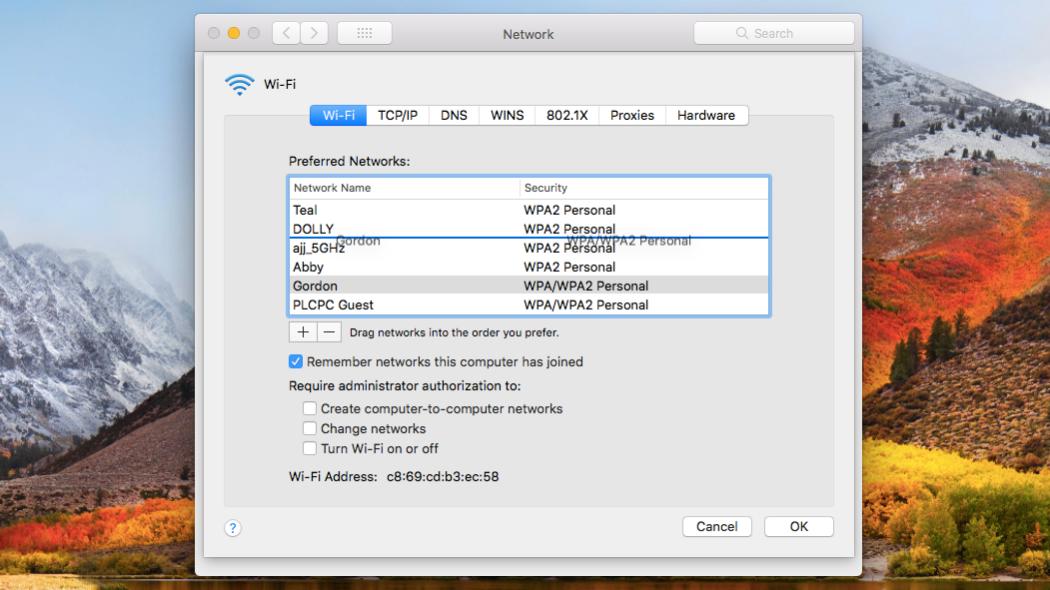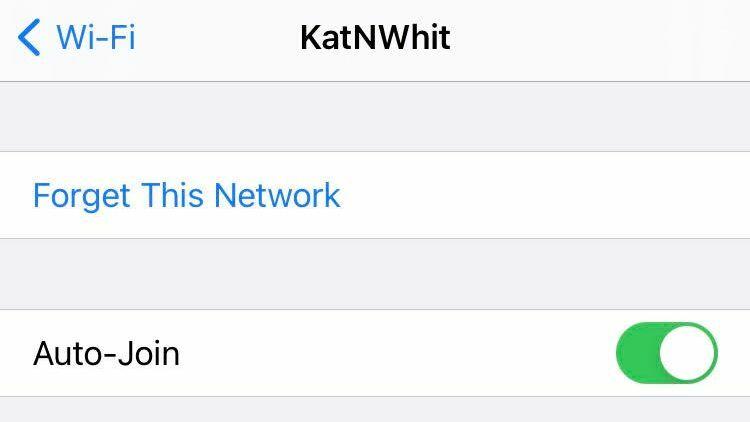
Device Connecting to the Wrong Wi-Fi Network? How to Change Its Connection Priority
Ever find yourself connected to the wrong Wi-Fi network because it overlaps with the one you want to use? If you popped over to a neighbor's house, for example, you might find your laptop "sticks" to their network after coming home. Or if you have a Wi-Fi extender in your house, you might stay connected to the weaker signal even when you're within range of the main router. Here's how to re-prioritize the Wi-Fi networks to which your laptop and phone connect.
Re-Prioritize and Delete Networks in Windows
If you're using a Windows PC, you can decide which networks your PC connects to automatically, but seeing the actual priority it assigns them requires a bit of digging.
Let's start with the easy stuff. Click the Wi-Fi icon in the bottom-right corner of the taskbar to view all the Wi-Fi networks within range. If you select a network from the list, there will be a Connect Automatically box under the network name.
With this box checked, your PC will automatically connect to that network when in range. Checking this box also puts that network at the top of the priority list, so you can fiddle with this to try and re-order networks, and uncheck this box for networks that you only need to connect to occasionally. You can also delete a network entirely by right-clicking it and selecting Forget.
If you're comfortable with the command line, you can also fine-tune your networks with a few commands. Click the Start menu, search for the Command Prompt, and open it. Run the following command to see a list of all your laptop's remembered networks:
netsh wlan show profilesThis list will be in priority order, with the highest priority network at the top, and the lowest priority network at the bottom. If things seem out of order to you (say, if your neighbor's Wi-Fi network appears above your own in the list), you can change any network's priority with the following command:

netsh wlan set profileorder name="NETWORKNAME" interface="INTERFACENAME" priority=NUMBERReplace NETWORKNAME with the name of the network, INTERFACENAME with the name of the interface listed at the top of the command, and NUMBER with the priority assignment. So, in my case, I want KatNWhit to be the first priority, so I'd run:
netsh wlan set profileorder name="KatNWhit" interface="Wi-Fi" priority=1Note that your interface may be called something like "Wi-Fi 2," so check the first line of that original command's output to make sure you have it correct. You can then run the show profiles command again to make sure your changes were applied properly. Hopefully this should fix some of your problems.
Re-Prioritize and Delete Networks in macOS
Macs make it easy to rearrange your wireless networks. Open System Preferences and select the Network option, then click the lock icon in the corner to make changes. (You may have to enter your password.) Click the Advanced button, then head to the Wi-Fi tab—you should see a list of every Wi-Fi network to which you have ever connected.
I recommend you start by deleting any networks you don't have a use for here, particularly the ones your laptop keeps connecting to accidentally. Then, you can re-order the remaining Wi-Fi networks by dragging and dropping them in order of priority. That way, your computer will prioritize your home Wi-Fi over nearby networks to which you may occasionally connect.
Re-Prioritize and Delete Networks on an iPhone
The iPhone doesn't give you a ton of options when it comes to prioritizing Wi-Fi networks, but there are a few things you can do. Head to Settings > Wi-Fi on your iPhone and you should be able to see all the wireless networks within range.
To prevent your iPhone from connecting to a network automatically, click the "i" icon next to the network's name and toggle Auto-Join off. This will keep the network's password stored on your phone, so you can connect to it when you want, but it won't connect to it automatically as you roam around.
You can also remove a network from your phone entirely by tapping the Forget option from this same screen. Apple doesn't provide any built-in way to re-prioritize networks, but you can read more about how it auto-prioritizes them on this support page.
Re-Prioritize and Delete Networks on an Android
Your phone likely doesn't give you as much control over Wi-Fi prioritization as your PC, but you can still improve things from the settings. On your Android phone, head to Settings > Wi-Fi and connect to the network you want to adjust.
13 Tips to Troubleshoot Your Internet ConnectionWi-Fi Range Extender vs. Mesh Network: What's the Difference?Tap the settings cog next to the network name and toggle off Auto Reconnect to prevent your phone from automatically connecting to that network in the future. The password will still be saved, though, so you can manually connect whenever you want. Alternatively, you can delete a network from your phone entirely by tapping Forget on this page.
Android no longer includes Wi-Fi prioritization features, though some custom ROMs may allow you to configure things further, so explore the Wi-Fi settings to see if anything catches your eye.
Fix Wi-Fi Extender Problems With a Mesh Network
If you have a network extender in your house to broaden your Wi-Fi coverage, you may run into problems with a phone or laptop that "sticks" to the extended network too often. For example, it keeps connecting to SmithHouse_EXT instead of the main SmithHouse network, even when you're within range of the normal router.
Prioritizing your Wi-Fi networks can help with this somewhat, but if you're roaming around the house, you may find your device still sticks to the wrong network. To solve this, you're best off getting rid of that extender entirely and replacing it with a mesh Wi-Fi system.
Unlike the cheap extenders you're probably used to, mesh Wi-Fi systems are designed to intelligently route traffic between one another, covering your house in a single Wi-Fi network and connecting you to whichever node is closest at a given time. For more, read how mesh stacks up against extenders.
A mesh system costs a bit more, but trust me: it's worth it to have stable Wi-Fi across your entire house. We have a setup guide if you decide to take the plunge.
Sign up for Tips & Tricks newsletter for expert advice to get the most out of your technology.
EmailThis newsletter may contain advertising, deals, or affiliate links. Subscribing to a newsletter indicates your consent to our Terms of Use and Privacy Policy. You may unsubscribe from the newsletters at any time.
Thanks for signing up!Your subscription has been confirmed. Keep an eye on your inbox!
}})